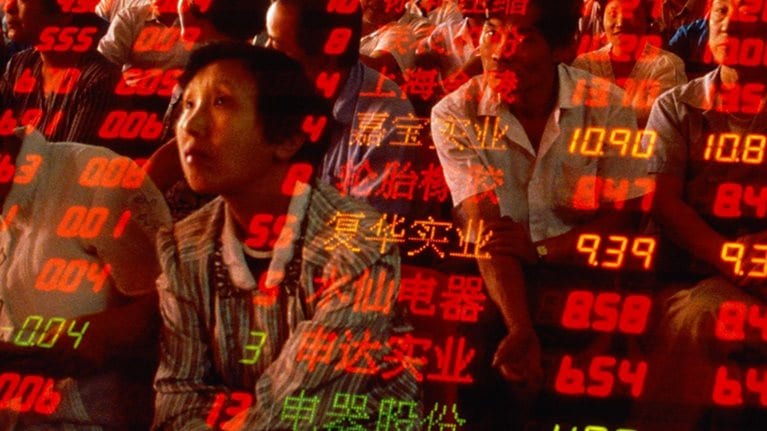Many international specialty-chemical companies have been unable to live up to their aspirations for growth and profitability in China over the past decade, even though the market has more than doubled in size. It’s time for international companies to learn from their mistakes and rethink their approach, taking account of changes under way in the market as China moves from an investment- to a consumption-led economy. In this article, we review these shifts in China’s specialty-chemical landscape and the steps that international companies need to take to build a position for the long term in this key market.
Stay current on your favorite topics
Time to rethink how to address a tough market
There’s no question that the expansion of China’s specialties market has been the big story in the industry so far this century. It has registered a compounded annual growth rate of 13 percent since 2008 to reach sales of about $140 billion in 2016 (Exhibit 1). But the high growth rates that international specialty-chemical companies have enjoyed have obscured some important but less attractive dimensions of their performance in China, specifically margins and market share.

Our research suggests that margins in specialty chemicals in China are structurally lower than in other regions: the average earnings before interest, taxes, depreciation, and amortization of specialty-chemical companies operating in China—both local players and international companies—is about four percentage points lower than the global industry average (Exhibit 2). There are some international companies that have reported better profitability performance in China, but they appear to be the exception.

What’s spurring this? China is a notoriously tough market in many segments, and specialty chemicals is no exception. Overcapacity and intense competition underpinned by fragmentation of industry players are common factors seen in many products and market segments in China’s specialty-chemical sector. While there are some segments of the industry that are less fought over, such as high-performance engineering plastics, these are less typical of the market.
Many international companies justify their lower margins as a necessary part of a global strategy to capture growth in China and build a long-term presence, and to serve global customers in the region. Some international companies also consider operating in China as a valuable strategy to get to know Chinese competitors that they increasingly encounter in other regions of the world and on their home turf. Such thinking has led to significant investments—both organically and through acquisitions—over a long period.
But there are signs that international companies are also failing to keep up with the market’s growth. Our research shows that international companies’ market share fell from 28 percent to 23 percent between 2005 and 2014. Over the same period, Chinese privately owned enterprises expanded their share, from 35 percent to 41 percent. Chinese state-owned enterprises’ (SOEs) share stayed essentially flat, at about 36 percent.
Nevertheless, the size and potential of China’s specialty-chemical market mean that any international company with growth ambitions has no choice but to participate there. The outlook is for continuing solid growth in China’s specialty-chemical demand: China’s per capita consumption level of specialty chemicals is about one-third that of developed countries. While China’s chemical demand, like its overall economy, is growing more slowly than earlier in the century, it is still the major force behind sales growth for the industry worldwide. China’s specialty-chemical demand is projected to grow at about 7 percent a year through 2020, compared with a global growth rate of about 3 percent. In all, China is expected to account for between 50 and 60 percent of global specialty-chemical-demand growth through 2025. Given that the Chinese market can’t be ignored, it’s time for international specialty-chemical companies to rethink their strategies.
Where have international companies been going wrong?
A combination of factors contribute to the performance shortfalls of international specialty-chemical companies. First, international companies are insufficiently tailoring their products to the Chinese market, relying on their Western product portfolio. They find themselves poorly placed to counter offerings from Chinese competitors that are proposing more attractive combinations of good-enough quality at a more competitive price. This often forces Western players to compete only in premium niches.
The underlying cause is lack of understanding of local markets. Western companies often find that they have limited access to important potential customers such as SOEs and fast-growing private enterprises, particularly in second- and third-tier cities. This is due to lack of in-depth market insight, insufficient relationship-building capabilities, and too little entrepreneurial Chinese top talent in key company positions.
Second, international companies’ intellectual-property-protected market share is under threat, as Chinese companies have gained technology by acquiring Western companies and have developed new synthesis routes that enable them to enter more sophisticated markets. International companies are increasingly finding Chinese competitors able to offer products and compete for high-end segments. Examples range from catalysts to enzymes to lubricant additives sold to automotive OEMs. These are all segments where traditionally international players had been relatively strong, benefiting from formulation know-how, technology, and higher barriers to entry because of the need for approvals and product certifications.
Third, Chinese competitors are raising their game. The most aggressive group are private entrepreneurs who are characterized by fast, hands-on decision making and good capital project management, enabling them to make investments at lower rates of capital expenditure. These companies also deploy highly effective and entrepreneurial incentive structures that are attractive to their executives, including bonuses linked to rapid initial public offerings. There are many examples of successful Chinese private-sector specialty-chemical players that are outpacing even the Chinese market’s high growth rates. Meihua, a large monosodium glutamate producer, has left little room in the Chinese market for multinational companies. Wanhua, a leading player in polyurethane and specialty isocyanates, has increased capacity to capture local demand growth and shown impressive financial performance in sales and profitability. Zhejiang Longsheng has become the largest and among the most profitable dyestuffs player in China through years of expansion and consolidation.
International companies are at a strategic crossroads. They are finding Chinese players increasingly able to offer competitive products, and the areas of the market that were exclusively the preserve of international companies are becoming more limited. Clearly, the strength of the Chinese market suggests that even pursuing niches will offer international companies attractive sales growth. But past experience suggests it is only a matter of time before Chinese competitors will be able to compete in most of these technologically advanced areas as well. This casts doubt on how successful such a strategy will prove longer term.
Would you like to learn more about our Chemicals Practice?
How international companies should reposition themselves
The major shifts under way in China’s economy could help international companies as they try a new approach to the country’s specialty-chemical market—particularly if they learn from their past mistakes. There are likely to be decisive shifts in demand patterns for specialty chemicals as the economy becomes more consumption-driven and environmental standards are tightened (see sidebar, “What could the new direction of China’s economy mean for specialty-chemical demand?”).
A number of sectors are likely to see higher demand. Take coatings: demand for volatile-organic-content-free water-based coatings is projected to grow at 16 percent a year through 2020, while other coatings such as traditional solvent-based paints will grow at 1 to 2 percent. Much of this higher demand is in high-tech-type areas where international companies have traditionally had a strong track record. The increasing sophistication of Chinese demand may eventually match the quality of the offerings that international specialty-chemical companies have at the ready.
International specialty-chemical companies should take a clean sheet approach to how they position themselves for growth in China over the next decade. This kind of fresh approach is essential to deal with the necessary changes, and we believe the following steps must be part of the approach:
- Continue to invest in China but learn from the past: Make a commitment to the Chinese market a central part of your company’s growth strategy and investment plans, and reflect that in your top management structure. Successful models include having a senior-management team member responsible for China or having the head of China report directly to the CEO. Acknowledge the less-than-perfect track record of international companies over the past decade and learn from this, and prioritize long-term goals that will assure the future of your China business. Do not expect to generate the same levels of profitability as in your developed-country markets or to grow at the same speed as Chinese competitors.
- Build up market- and segment-level insight: Evaluate specific segments for their growth potential, carefully considering China’s economic trajectory, emerging local competition, and any end-market stimulus that may materialize, such as from government programs. Improving water quality is expected to be a policy goal, for example, and so specialty products that can enable this, such as membranes for water filtration, should see higher growth. Adopt a granular approach that takes into account regional differences when assessing specialty-chemical segments. The approach should also recognize the large number of players in some of these segments and the notable diversity of profitability levels and growth prospects on a subsegment level. It should also include careful assessment of second- and third-tier cities that may offer higher growth potential over the coming decade.
- Use this insight to develop China-tailored product and service offerings: Provide products that are designed to meet the current needs of Chinese customers at a competitive price point for certain markets. At the same time, position your business to provide more sophisticated products for Chinese customers as they develop new technologies and products. Provide local teams with full authority and resource support to develop and launch products tailored for the Chinese market. International companies that have taken this route have seen substantial growth. For example, one company that has focused on developing flavors tailored to Chinese regional cuisines doubled its capacity with a new plant in 2015. It backed the investment up with a new applications laboratory in 2016; the new plant has been designed to be able to expand production twofold or more. Similarly, another international company that has developed skin-care products especially for the Chinese market, including effectiveness trials with Chinese volunteers, has seen significant sales growth.
-
Build the right China-specific operating model:
Develop a capable local China organization with well-established business functions. These should include finance, business development, and market intelligence, so as to be able to support business needs and match the faster local pace, as well as continuous-improvement programs. It is important to have processes that can support rapid, localized decision making that, where appropriate, can function autonomously from the company’s headquarters overseas.
Invest in and empower local talent. Do not run your operation in China with a team of expatriates who have built their careers in the West. Instead, your company needs a local management team with real decision-making power. You must be ready to make a substantial investment in local staffing, with an eye to developing the capabilities of Chinese nationals with management potential who can also work for the company in the West and then bring that knowledge back to China. For example, one international company’s successful Chinese operation has been led by a Chinese national who had previously run one of the firm’s global business units; he reports directly to the CEO.
Develop an entrepreneurial spirit. This will mean appointing more individuals who are business builders, fostering a “hunter” mentality by establishing an organizational environment that encourages this, and backing it up with appropriate incentive systems.
Build local expertise and infrastructure so your company can do an effective job scouting for business partners and managing joint ventures, and at the same time build long-term relationships with local and federal authorities. Again, this requires a strong local Chinese management team with in-depth market knowledge and that commands a range of business and technical capabilities.
International specialty-chemical companies cannot afford to miss out on China, which is on a trajectory to become the largest specialty-chemical market in the world. To succeed, they need to carefully adapt their approach to the Chinese market both in terms of how they organize the structure and staffing of their business and the lineup of their product offerings. The shifts now under way in China’s economy that are having a knock-on effect on specialty-chemical demand offer international companies a renewed opportunity to find success there.



